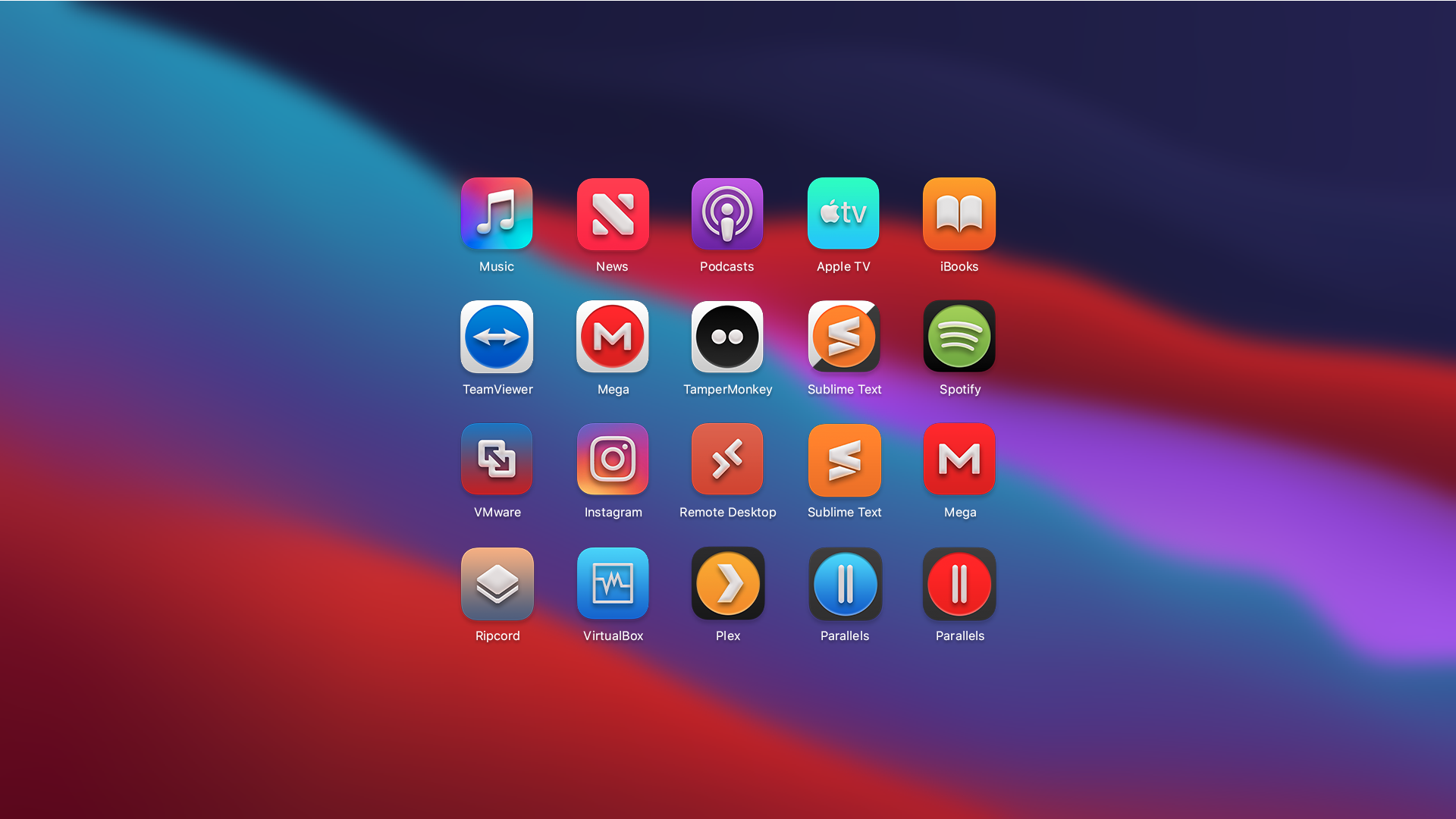Guest blog post from Dmitry Geynisman, Product Manager at Parallels
- Mac Os Big Sur Parallels Desktop Update
- Big Sur Mac Os Wallpaper
- Cached
- Parallels Desktop 16.3.2 Cracked For MacOS {Apple M1 + Big ..
- Big Sur And Parallels: 'Network Initialization Failed ..
- Big Sur Mac Os Update
Nov 13, 2020 Wait a few minutes while Parallels Desktop is creating a disk image file. Specify the desired name and location and click Create. Parallels Desktop 16 will create a virtual machine and boot to the macOS Big Sur installer. Follow the macOS Big Sur installation and setup procedure. From Mac's recovery partition. Run Parallels Desktop, and in the. Parallels engineers have been putting thousands of hours into Parallels Desktop 16 for Mac development and testing to make sure it fully supports macOS 11 Big Sur. Most of issues we ran into have been resolved, some have workarounds, and there are just few we’re still working hard on to resolve.
Parallels Desktop tends to get an update every year, to coincide with the latest version of macOS. The release of Big Sur in 2021 represented one of the biggest update to the macOS in years.
You may have seen these messages from both macOS and Parallels Desktop for Mac:
No worries, in this blog post I will explain the situation in detail. First, I will give you a relatively short answer about why Parallels® Desktop uses system extensions, and then more details will follow.
- Parallels Desktop uses a hypervisor technology to create a high-performance virtual machine, so you can run Windows, Linux, macOS, and other operating systems inside it.

- There are 2 types of hypervisors on macOS that Parallels can use: Apple’s built-in hypervisor or Parallels’ proprietary hypervisor. Parallels proprietary hypervisor is implemented as a system extension.
- System extensions in macOS enable developers to integrate deep into the macOS system to achieve better performance or provide some unique functionality.
- When Parallels Desktop attempts to load the Parallels hypervisor system extensions, macOS prompts a user to ‘allow’ this. System extensions have elevated privileges and if they are coming from a non-trusted source, can be used maliciously. So, it is a security precaution, similar to how your phone apps ask to access your camera.
If you downloaded Parallels Desktop from parallels.com and the system extension is signed by “Parallels International GmbH”, then you are in good hands.
- Parallels recommends you use Apple’s built-in hypervisor. That way macOS won’t bother you with System Extension approval or the need to reboot. However, if you need to use the Nested Virtualization feature or a specific workload where Parallels hypervisor shows higher performance scores, you may keep using Parallels hypervisor.
Mac Os Big Sur Parallels Desktop Update
- To change a hypervisor type, first, you need to shut down or stop your virtual machine. Note that for this you might need to start or resume the virtual machine and approve Parallels hypervisor system extension.
When your VM is stopped, go to VM configuration > Hardware > CPU & Memory > Advanced Settings > click on the “Hypervisor” dropdown > select “Apple” or “Parallels” respectively.
If you have multiple virtual machines, you may need to change the setting for every one of them.
Now, if you’re not bored yet, I’d love to tell you more about this story.
For more than a decade, Parallels developed its proprietary drivers (aka system extensions) for running Windows and other OSes on top of the macOS. These drivers made Parallels Desktop the best virtualization solution, the fastest, and the most technologically advanced.

At the same time, for several years, Apple has been moving towards making macOS the most secure and reliable desktop OS (and I should say, Apple succeeded in many ways). One of the key aspects is not to let developers intrude on the OS kernel by loading those extensions (aka “kexts”), as those who have access to the kernel can do things at the very heart of your Mac, which may prove quite dangerous. In order to do that, Apple must replace 3rd-party kernel extensions with the native system APIs that ultimately enable the same product features, and that is massive engineering work even for such a big enterprise as Apple.
Since 2017, with the macOS High Sierra 10.13 release, Apple started to block 3rd-party kexts automatically, and users have had to enable them manually since. At that time, we published this blog post that can tell you even more about Parallels Desktop using system extensions.
In March 2020, with the release of macOS Catalina 10.15.4, Apple started to warn users that some of their apps (that use deprecated system extension) would “be incompatible with a future version of macOS” (read: with macOS Big Sur).
At WWDC20, Apple was quoted as saying that “System Extensions improve the reliability and security of macOS, and deprecated kernel extensions will not load by default in macOS Big Sur”. Eventually, to make Parallels Desktop fully compatible with the new macOS Big Sur 11.0, Parallels Engineering has gone through years of engineering work of rebuilding Parallels Desktop and its features using the new macOS system APIs. This extensive and time-intensive development resulted in the all-new Parallels Desktop, explicitly designed to work and integrate with new macOS Big Sur technologies, and at the same time, deliver performance and productivity improvements to benefit Parallels Desktop customers.
This scheme below visually describes the difference between the default Parallels Desktop modes on the corresponding macOS version. The old Parallels Desktop design using Parallels system extensions is shown on the left, and the newly-invented Parallels Desktop 16, using macOS Big Sur APIs, is shown on the right.
/https%3A%2F%2Fspecials-images.forbesimg.com%2Fimageserve%2F607c88a411c74b96efbec609%2F0x0.jpg)
For now, our team continues to work on supporting both Parallels and Apple hypervisors and continues collaborating with Apple on implementing the rest of Parallels Hypervisor features to Apple Hypervisor. We recommend using Apple hypervisor, and if you notice any difference between Apple and Parallels hypervisors for your use case, please let us know.
Download a free trial of Parallels Desktop for Mac and try it out yourself.
Can you install the macOS Big Sur public beta in a VM?
Quick answer: Yes
The details: Now that Parallels Desktop 16 has been released, I am able to talk about this new version of Parallels Desktop that I have been using for about the last six months.
I was able to install the macOS Big Sur public beta in a VM. In fact, this is my preferred way to test out a new OS that is under development, and I have been doing so for years. OSes under development can have significant issues, and if you test them out in a VM there is no risk to your Mac.
Big Sur Mac Os Wallpaper
Can macOS Big Sur be installed in a Parallels Desktop 16 VM?
Yes, it can, but an additional variable to consider is the host OS.
On a Catalina host
I encountered no issues at all, but it did take a while. A large portion of this time was downloading the “Install macOS Big Sur public beta” app—a 12.3GB download!
Normally, installing the Parallels Tools in a new OS under development is a mistake. The Parallels Tools are individually designed for each guest OS. Disc soft driver. While it is possible, having the Tools for an older OS work in a newer OS is unusual. Installing older versions of Tools can sometimes cause an OS to “lock up”. So, what I usually do is not install the Tools by default, make a copy of the Tool-less VM, and then see what happens when I install the Tools.
I did this for the Big Sur VM on my Catalina host, and the Parallels Tools did not cause any issues. Not everything worked perfectly, but it is quite usable.
On a Big Sur host
This went perfectly and everything I have tested works fine. However, I am not a professional tester, so I will wait to hear the experience of the engineers in the Parallels QA team.
Can macOS Big Sur be installed in a Parallels Desktop 15 VM?
On a Catalina host
The answer is “yes” this can be done, but there are several gotchas to worry about. My first three attempts did not succeed, but on the fourth try I did get it to work.
Cached
I will wait until macOS Big Sur is released to share images and videos of the installation and use of a macOS Big Sur VM in both Parallels Desktop 15 and Parallels Desktop 16. Perhaps some of the issues I encountered will be gone in the actual customer release of Big Sur.
Parallels Desktop 16.3.2 Cracked For MacOS {Apple M1 + Big ..
If you have also started using macOS Big Sur with Parallels Desktop, please let us know about your experiences in the comments or on Facebook or Twitter.
Big Sur And Parallels: 'Network Initialization Failed ..
Elitegroup computer sytstems driver download. Please also refer to this knowledge base article for further information.
Big Sur Mac Os Update
Feel free to test Parallels Desktop 16 for Mac for 14 days for free.
